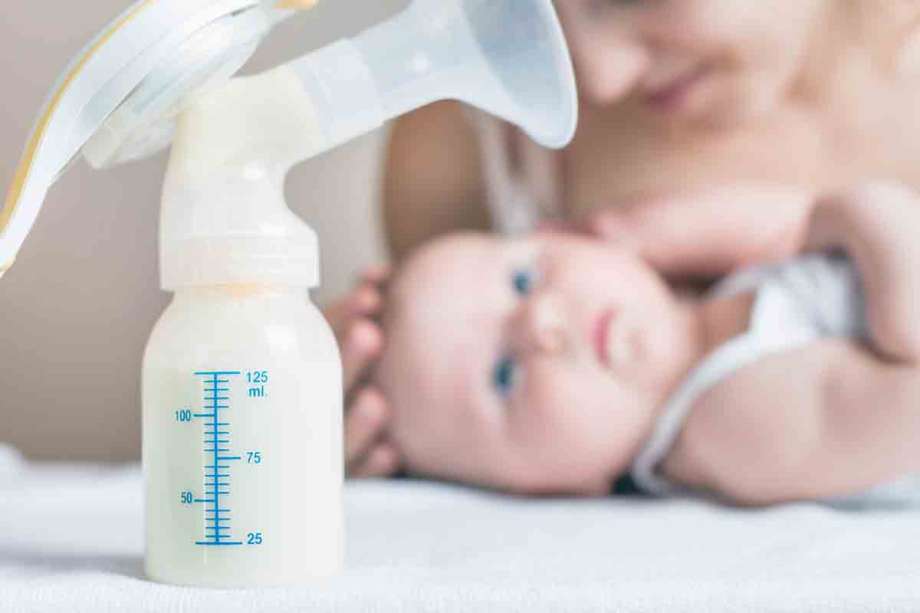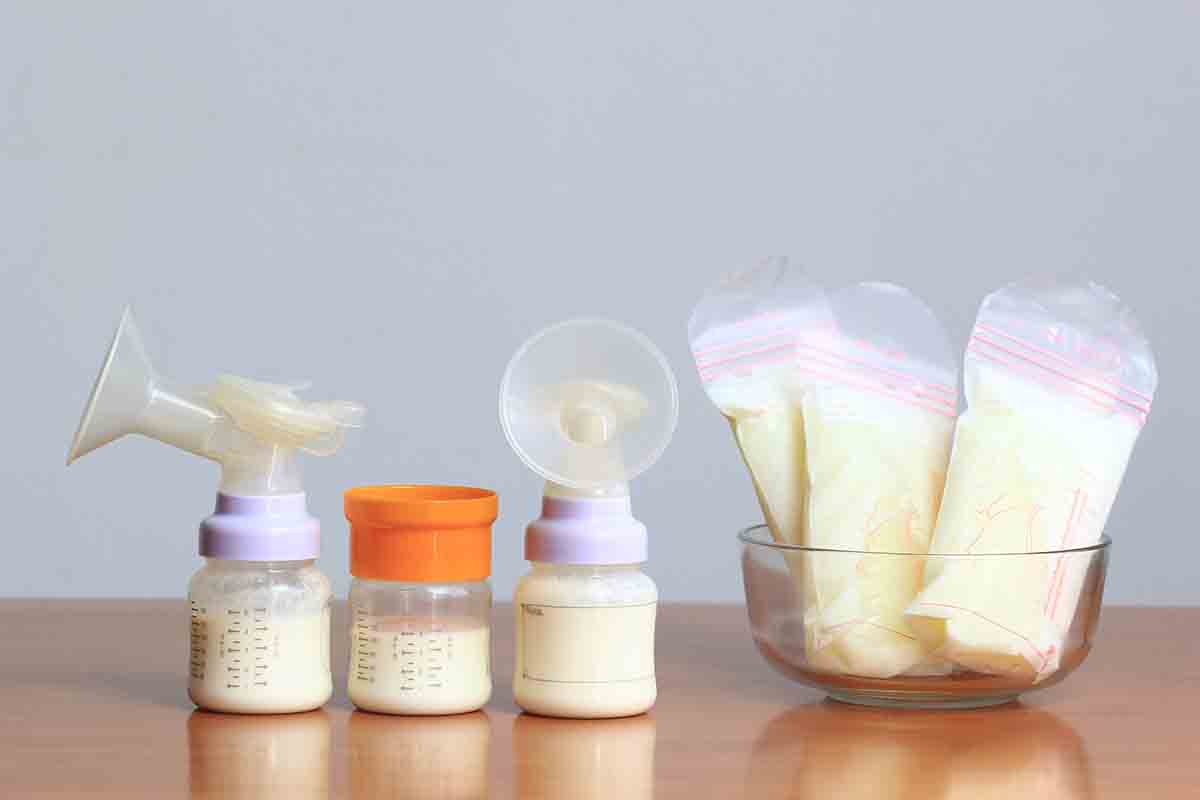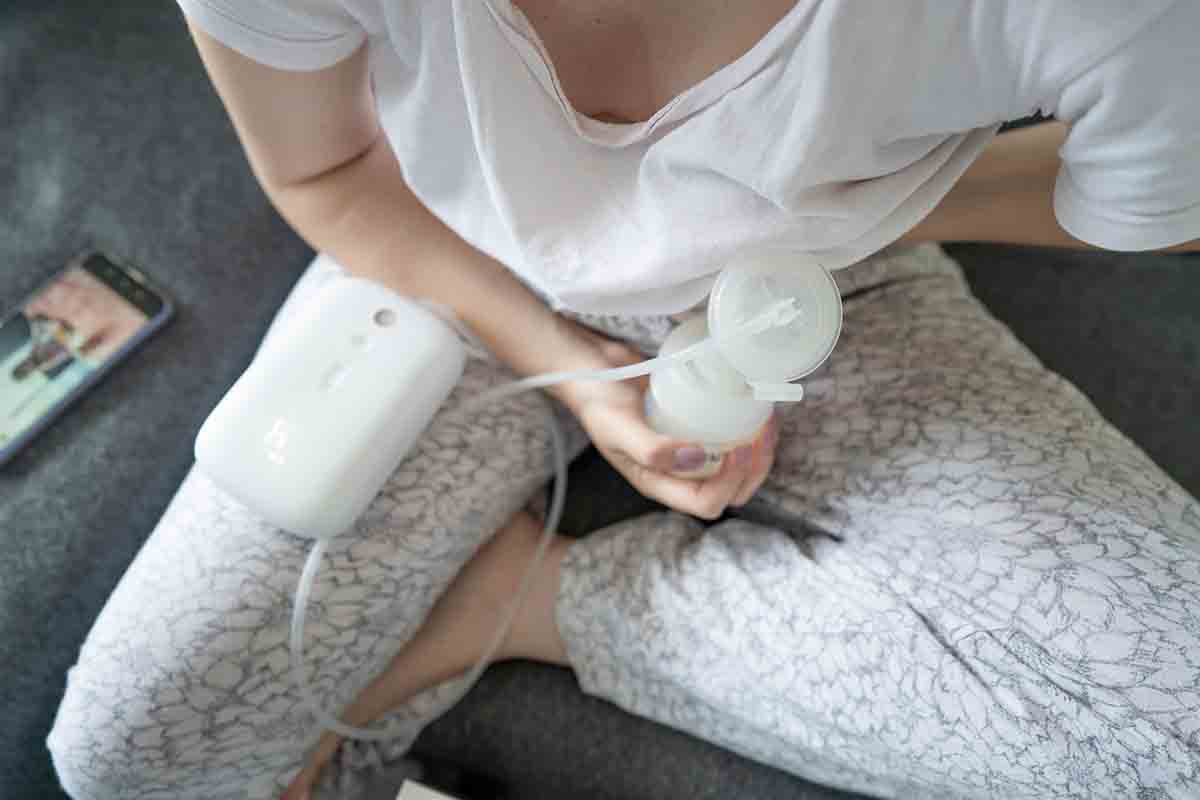Breastmilk Storage: How Long is Breast Milk Good For?

Breast milk is called liquid gold for a reason. Regardless of whether you pump milk to bottle feed or nurse your child right from the breast, babies get necessary nutrients and antibody protections from human milk. Since breastfeeding takes time and energy, make sure you are storing breast milk properly to make it last. Knowing breast milk storage guidelines is important for any nursing parent.
While expressed milk can sit at room temperature for a bit after pumping, it shouldn't be left out too long, as it can grow bacteria at too high of temperatures, which will cause it to spoil and could make your baby sick. Breast milk is good in the fridge for a few days, but freezing it can help it last many months.
Deciding what you will keep expressed milk in is also important. There are many different methods of storage for breast milk that meet clinical protocol. Disposable bottle liners cut down on cleaning time for busy parents. Glass and BPA-free plastic containers are available, as are plastic bags designed to help you build up a breast milk stash.
How Long Does Breast Milk Last?

When pumping, the goal is to have leftover milk to keep on hand. Storage time for breast milk in the freezer is six months, though it can still be used at twelve. However, you should never freeze breast milk a second time after it has been thawed.
In the fridge, expressed milk can be kept for up to four days. Warm breast milk may be most appealing to your baby, but when it's left at room temperature, it goes bad much more quickly. When you're on the go, place breast milk in an insulated cooler with ice packs. This will keep frozen or room temperature milk fresh so bacteria does not grow in it. Thawed breast milk that was previously frozen is good for only one to two hours at room temperature.
According to the Center for Disease Control and Prevention's guidance of proper storage and preparation of breast milk, pumped breast milk should not be left out for more than four hours to avoid bacterial growth. The CDC defines room temperature as 77 degrees Fahrenheit or cooler.
Storing Breast Milk

To safely keep your frozen milk fresh for a long time, stored milk should be placed in the back of the freezer, where the temperature stays more consistently cool. It's also best to freeze smaller amounts from two to four ounces — considering the amount your baby can finish within two hours after you thaw it. Waterproof labels are essential for milk being stored in the fridge and freezer so you can accurately keep track of how long it has been in there.
Use warm water to thaw frozen milk for your baby. While a microwave can heat bottles up more quickly, there can be hot spots in the milk since it will not be heated evenly. Either running water or a bowl full of warm water can help thaw the milk, though boiling should be avoided as it removes some of the antibodies and can weaken the potency of nutrients.
Like the placement of frozen breast milk, keeping chilled milk in the back of the refrigerator will also help it stay fresher. Sometimes a baby needs milk immediately, so it's good to keep some expressed milk cold and on hand for quick feedings. It can be warmed, but you will not have to worry about thawing it from frozen. Avoid putting a bottle back in the fridge after feeding, however, as bacteria from the baby's mouth can still grow in the milk when it's chilled.
Choosing Breast Milk Storage Containers
There are many options for human milk storage based on an individual's needs and situation. Disposable products can save time and offer convenience to busy parents. Reusable storage is good for parents on a budget and leads to less waste. These are available in plastic or glass, though you should make sure that the shape of the container will work for the area where you'll store them.
Breast milk storage usually consists of sterilized plastic bags or plastic containers like bottles, specifically designed to keep human milk fresh with tight-fitting lids. Seek out something BPA-free. Breast milk storage bags are a good option for when you're building a supply. Disposable bottle liners also provide the convenience of easier cleanup.
Keeping Breast Milk Supplies Clean
Reusable breast milk storage can help you save money and be better to the environment. But with this method, ensuring things are cleaned properly is imperative to making milk last and keeping your baby safe and healthy. Choose a fragrance-free dish soap that will not add a taste to the bottle that your baby may be bothered by.
Bottles should be promptly washed in warm soapy water following a feeding session. A dedicated baby bottle brush is a must for this process, to get the entire bottle clean. Sterilize the bottles or containers with boiling water prior to next use to kill any bacteria. For thick milk that won't come off during normal cleaning, a combination of one part vinegar and one part baking soda can help remove it.
Signs of Spoiled Breast Milk
Even when you follow all of the steps to keep your milk fresh, you still want to make sure your milk is safe for your baby. Always wash your hands before pumping, hand expressing, or nursing your baby. It's also important to know what to look for when it comes to spoiled milk. Pay attention to milk smells. If breast milk smells sour, it is starting to go bad and should be disposed of.
Metallic or soapy-smelling milk may occur due to issues with pump parts or production issues. If your milk smells fishy and your baby does not seem to be wanting it, it may have a high lipase level. While this is not harmful to your baby, it may leave them disinterested in nursing or drinking bottled breast milk. Mixing high lipase pumped milk with fresh breast milk or formula can help it become more appealing to babies. Also, scalding freshly pumped milk in hot water can prevent this in the future. Just make sure the milk is heated, rather than brought to a boil, so it keeps its full nutritional value.
Boosting Milk Supply

Frequent nursing or pumping is key to building up a breast milk supply, though some foods and supplements may also help increase production. Eating a balanced diet of protein sources, fruits, vegetables, and healthy fats is key to staying healthy while breastfeeding and keeping up the supply. Getting enough rest and keeping stress levels low may also help, though this is not always easy for new parents. Some foods, like oats, pumpkin, and peanut butter are thought to boost milk supply. Drinking enough water is also important to keep up supply and avoid dehydration, as much of your body's water is going toward milk production. Herbal supplements like blessed thistle and fenugreek could also help, though you should consult your physician before adding these to your diet.
If you are having supply issues, an International Board Certified Lactation Consultant, or IBCLC, may be able to help you figure out ways to boost your supply. Note that while breast milk is a very healthy option that provides extra protection to mothers and their children, the baby formula also has the required nutrition babies need. Your lactation consultant or your child's pediatrics doctor can help you decide what will be best for you and your family.

